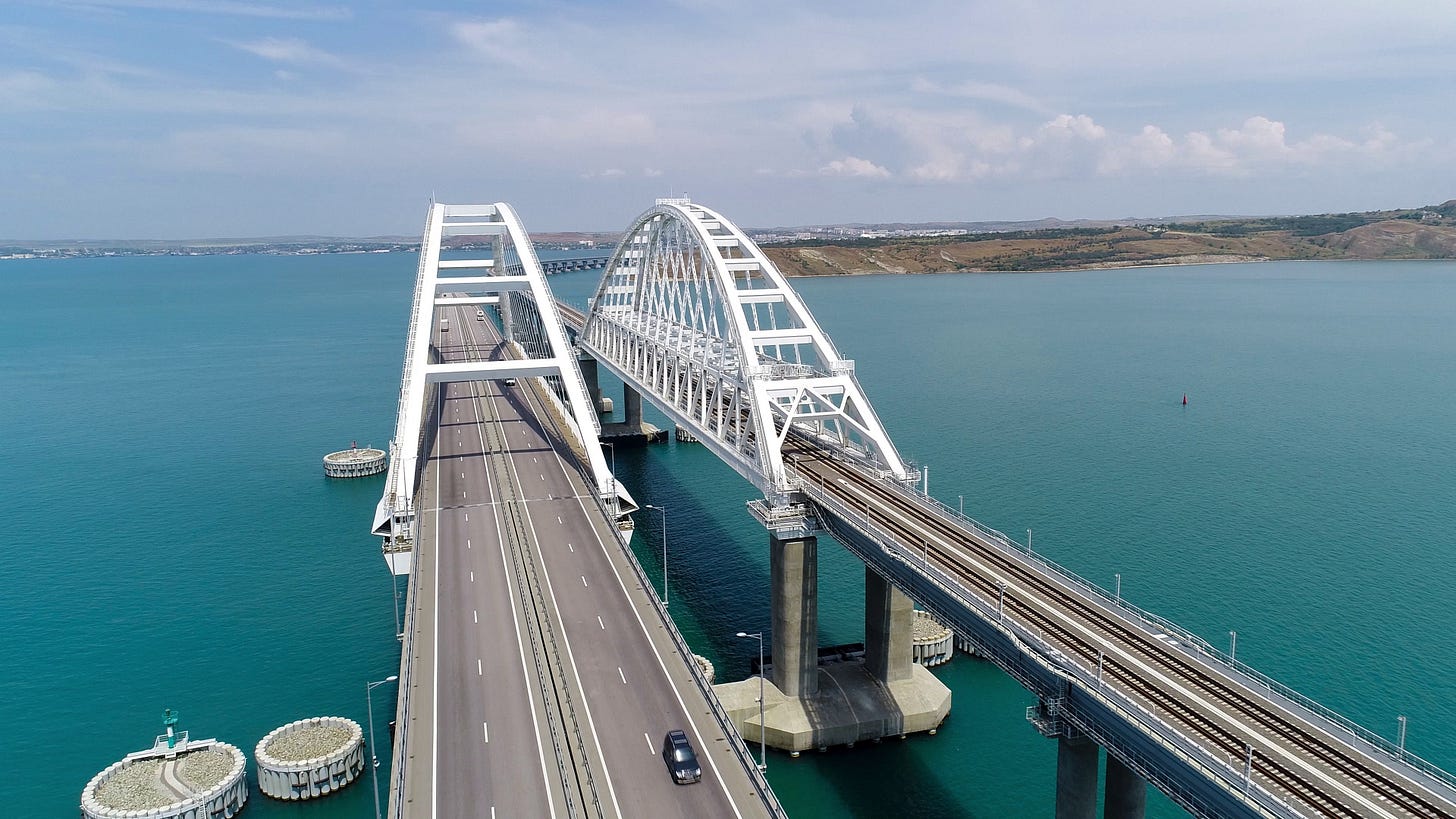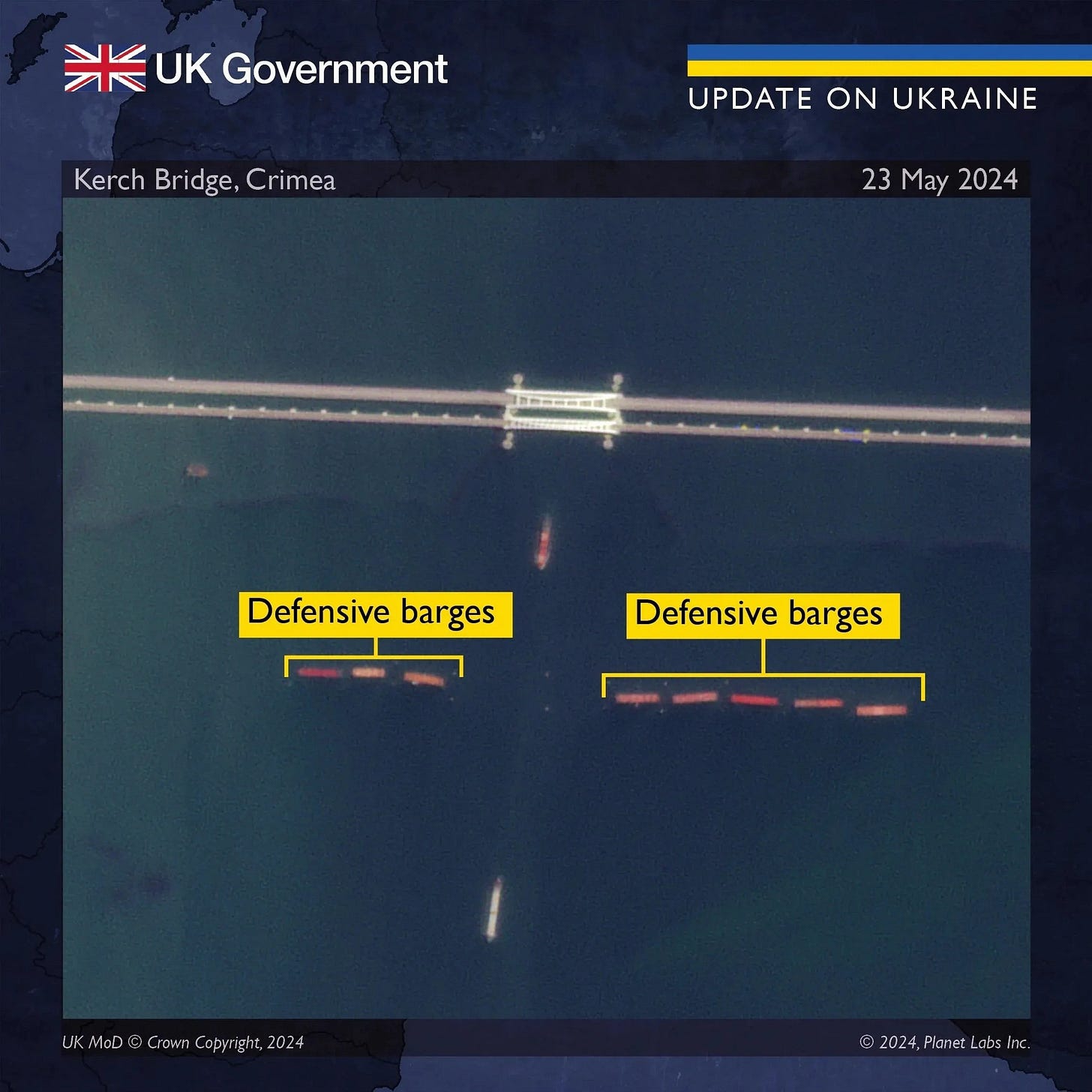The Bridge That Keeps Cheating Death - Why is the Crimean Bridge Still Standing?
Historically, bridges are difficult to destroy... Even for the United States military.
At 4:44 AM on June 3, 2025, Ukraine’s Security Service (SBU) did something very few nations would attempt: it launched an underwater sabotage strike on the Crimean Bridge, also known as the Kerch Strait Bridge, a symbol of Russia’s annexation of Crimea and an artery for military logistics.
SBU agents planted a massive 1,100-kg TNT-equivalent charge on a submerged support pier. The result? Serious damage to the road surface and rail fencing, disruptions to traffic, and a rare admission of chaos from Russian Telegram channels.
But here’s the thing… again, it didn’t fall.
And it probably won’t. At least not without Ukraine escalating the bridge war into something more akin to a long-term campaign of industrial-scale demolition.
So, why is the Kerch Bridge still standing?
To answer that, you have to understand both modern engineering and the brutal history of what it takes to actually drop a bridge in wartime.
Stronger Than They Look: Why Bridges Shrug Off Explosions
If you ask Dmytro Makohon, a structural engineer who’s seen his fair share of war-torn infrastructure, collapsing the Kerch Bridge is less about drama and more about math. "It’s very, very hard to achieve," he said, citing the sheer thickness of the piers and the redundancy baked into the design.
It was built to take hits, from ships, from ice floes, and now from Ukrainian ingenuity.
Remember the Antonivskyi Bridge? That thing got pounded by HIMARS over and over. Never fully collapsed. The Kerch Bridge is newer, built with high-strength concrete, steel reinforcements, and modern materials, which Russia actually had in 2015 before the war severely limited Putin’s capacity to build infrastructure.
Even the dramatic truck bombing in October 2022, which involved 21 tons of explosives, did more cosmetic than structural damage. And this time, although an underwater explosion has a much tighter shockwave thanks to water compression, the blast energy still has to chew through meters of reinforced concrete.
Bridges like Kerch are over-engineered for exactly this reason. The support structures are massive, multi-redundant, and designed to absorb punishment without a cascade failure. Even an explosion that cracks a pier might not be enough if the rest of the structure can redistribute the load.
Having said all of that, even Russia is spooked at the prospect of the bridge coming down. At one point in May of 2024, Putin’s FSB ordered the use of a line of large container ships in a row to block Ukrainian naval drones.
Explosive Math: How to Actually Kill a Bridge
Blowing up a bridge sounds cinematic; cue the Michael Bay, cut to a massive fireball, and watch the whole thing collapse in a slow-motion ballet of steel and concrete. Reality? Not so much. Killing a bridge isn’t about drama; it’s about math, physics, and an uncomfortable intimacy with load-bearing calculations.
Fuck. I hate math.
First, bridges don’t fail all at once. They’re designed with structural redundancy, which means that if one part of the support system takes a hit, other components are engineered to pick up the slack.
Dropping a single span might sever traffic, but it won’t bring the whole structure down. Think of it as trying to tip over a centipede by removing one leg. You need to hit it in multiple, interdependent places, and all within a very narrow window of time.
Now add the fact that bridges have different failure modes. You can destroy the deck, shear off a support pier, collapse a truss segment, or deform the superstructure to the point where it’s no longer safe to use. Each of those targets demands a specific kind of munition, delivered with precise timing and placement.
The bigger the bridge, the more specific the equation becomes.
And those equations are unforgiving. The energy required to buckle a reinforced concrete pier, crack a tension cable, or shear through a welded steel joint is enormous and directional.
Blast energy doesn’t just flow where you want it to. It bleeds out into the environment. Water absorbs and reflects shockwaves in strange ways. Air disperses force over distance. Even the angle of detonation matters. A few degrees off, and the explosive force just punches a neat, ineffective hole.
Keep reading with a 7-day free trial
Subscribe to Eyes Only with Wes O'Donnell to keep reading this post and get 7 days of free access to the full post archives.




